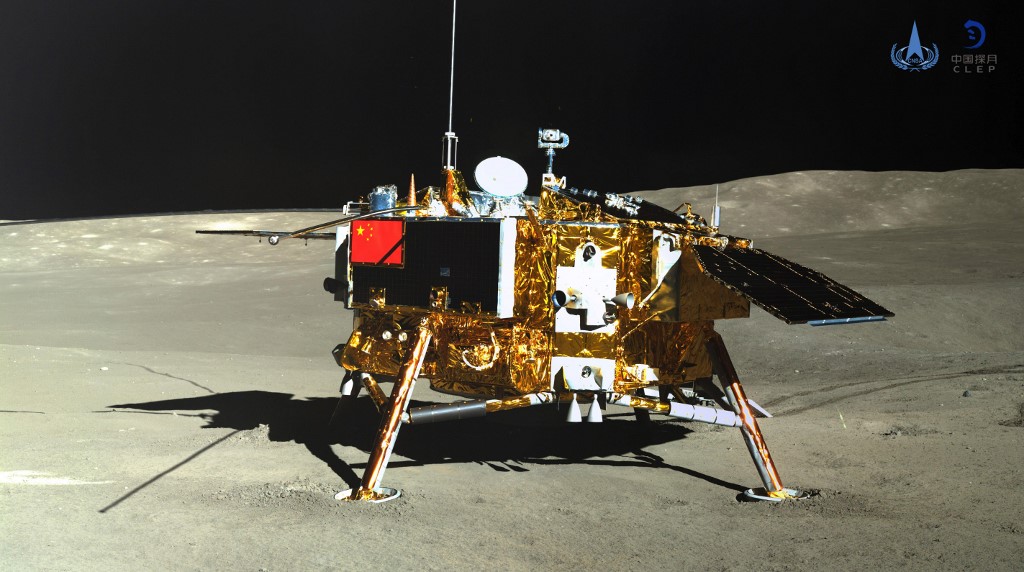Chinese probe reveals secrets of Moon’s dark side

This picture released on January 11, 2019, by the China National Space Administration (CNSA) via CNS shows the Chang’e-4 lunar probe, taken by the Yutu-2 moon rover, on the far side of the moon. Scientists on May 15, 2019, said they may be a step closer to solving the riddle behind the Moon’s formation, unveiling the most detailed survey yet of the far side of Earth’s satellite. In January, the Chinese spacecraft Chang’e-4 — named after the moon goddess in Chinese mythology — became the first ever craft to touch down on the far side of the lunar surface. AFP
PARIS, France – Scientists on Wednesday said they could be a step closer to solving the riddle behind the Moon’s formation, unveiling the most detailed survey yet of the far side of Earth’s satellite.
In January, the Chinese spacecraft Chang’e-4 — named after the moon goddess in Chinese mythology — became the first ever craft to touch down on the far side of the lunar surface.
READ: NASA Heading Back to Moon and This Time to Stay
Similar to other bodies in our Solar System, the Moon is believed to have gone through a phase during its formation when it was partially or entirely composed of molten rock.
As it cooled, so the hypothesis goes, denser minerals sank to the bottom of the magma-ocean, while lighter materials gathered near the surface to form its mantle.
Unlocking the potential science of the Moon allows us to explore like never before. Watch @Dr_ThomasZ of #NASAScience discuss how the @WhiteHouse budget amendment supports robotic exploration ahead of our 2024 mission to land humans on the lunar surface: https://t.co/NQSHOPxaXo pic.twitter.com/vdeO5ikIez
— NASA (@NASA) May 16, 2019
The team landed its probe in the Von Karmen Crater in the Aitken Basin at the Moon’s South Pole — home to one of the largest impact craters known in the Solar System.
They detected materials such as olivine and low-calcium pyroxene that are rare elsewhere on the surface.
Authors of the study, which was published in the journal Nature, suggest that these materials were ejected from the Moon’s upper mantle when it was struck by a meteor.
“Our results support the lunar magma ocean theory, and demonstrate that the magma ocean hypothesis can be used to describe the early evolution history of the Moon,” Chunlai Li, from the Chinese Academy of Sciences, told AFP.
Unlike the near side of the moon that always faces the Earth and offers many flat areas to touch down on, the far side is mountainous and rugged.
🛰️
🌑New image! 📸 Our @NASAMoon orbiter captured this visual of the lunar impact site from @TeamSpaceIL's Beresheet spacecraft. If you look close, there are also clues about a possible man-made crater on the Moon: https://t.co/WgYqoxEMhS pic.twitter.com/jxdr9VV8Lq
— NASA (@NASA) May 15, 2019
The United States, Russia and China have all landed probes on the near side of the Moon, though neither NASA’s Apollo missions nor the Soviet Union’s Luna probes have ever returned samples of the lunar mantle.
Writing in a linked comment piece, Patrick Pinet, from France’s l’Institut de Recherche en Astrophysique et Planetologie, said Li’s findings were “thrilling”.
The results “might also affect our understanding of the formation and evolution of planetary interiors,” Pinet wrote, saying that more research on the far side of the Moon was “of the utmost importance.” /cbb